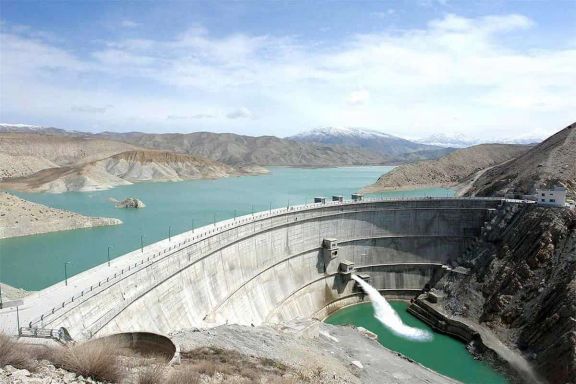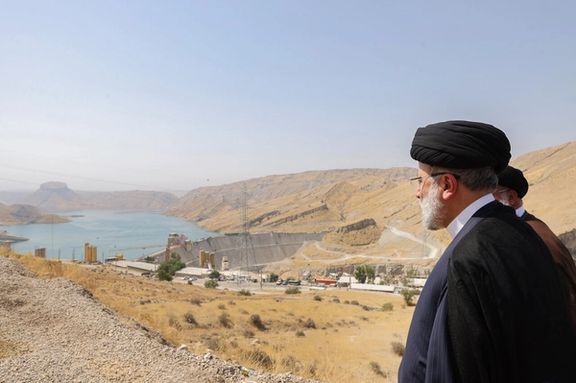Iran's Dams Drop To Half Capacity As Hydroelectric Power Overused

Official statistics indicate a severe decline in the water reserves of Iran’s dams due to the overgeneration of hydroelectric power in the summer of this year.

Official statistics indicate a severe decline in the water reserves of Iran’s dams due to the overgeneration of hydroelectric power in the summer of this year.
Iran has been severely affected from water shortages and prolonged droughts for two decades, while grappling with a substantial electricity deficit in summers and gas shortage in winter.
ISNA reported on Sunday, December 17, that the statistics on the operation of the country's reservoir dams indicate that the water volume in the reservoirs is only 40% full.
Official statistics detail that while the volume of water inflow into the dams increased by 7% compared to the same period last year, the water outflow from the dams increased by 22%. Consequently, their water reserves have decreased by one billion cubic meters.
None of the government statistics or official statements explain why the Ebrahim Raisi Administration allowed a 22% increase in the discharge of dam water. However, details from the Ministry of Energy's data on power generation show that the government has compensated for some of the summer electricity shortage by significantly and urgently increasing hydroelectric power production from dams.

In recent years, Iran has been unable to achieve its electricity generation growth targets, leading to a deepening of the country's electricity shortfall.
In the first seven months of the current fiscal year, started on March 22, Iran launched around a 1,000 megawatts of new power plants, with only 35 megawatts being from solar and wind, and 116 megawatts from "combined cycle" with relatively high efficiency.
This is despite the Raisi Administration’s plan to launch over 6,000 megawatts of new power plants this year, with half of them being renewables.
The latest report from the Ministry of Energy shows that the hydroelectric power generation from the country's dams has experienced a 57% jump in the current Iranian year (beginning March 21) compared to the same period last year, reaching over 17 trillion watt-hours.
This significant increase in hydroelectric power generation comes while the water inflow into the dams this year has only grown by 7% compared to last year. As a result, the government has emptied the reservoirs of the dams to solve part of the summer electricity deficit, exacerbating the country's water crisis.
The monthly report from the Ministry of Energy also indicates that while the government had targeted the launch of 6,000 megawatts of new power plants, only 15% of that has been achieved in the eight months of the current Iranian year, with almost all new power plants being thermal and operating with low efficiency, using natural gas, Mazut, and diesel.
In recent weeks, the highly use of mazut in power plants has led to severe air pollution in the country, especially capital Tehran. This is a dirty fuel banned in most countries.
According to a confidential report, prepared by the oil ministry and obtained by Iran International, Iran used 45 million liters per day of mazut and 117 million liters of diesel in last winter due to gas shortages.
For this year, the government had targeted the launch of over 2,600 megawatts of solar and wind power plants, but only 1% of that has been realized in the eight months of this year.
While Iran boasts 300 sunny days annually, the contribution of solar and wind energy to the country's electricity production remains at approximately half a percent, with atomic energy making up just over one percent.
Deputy Minister of Energy Mahmoud Kamani's announcement on December 15 highlighted an electricity imbalance of 12,000 megawatts this summer, predicting a further 5% increase next year.
For comparison, Turkey surpasses Iran, with 35 times more solar and wind power production and renewable electricity generation capacity 22 times greater than the Iran’s nuclear power plant. Over a quarter of Turkey's electricity is derived from water sources, while this figure for Iran is 6%.
Iran's electricity issue, causing dam water supplies to drop below half, signals a serious problem. The intricate relationship between water resource management and energy production exacerbates the scarcity of both vital resources.